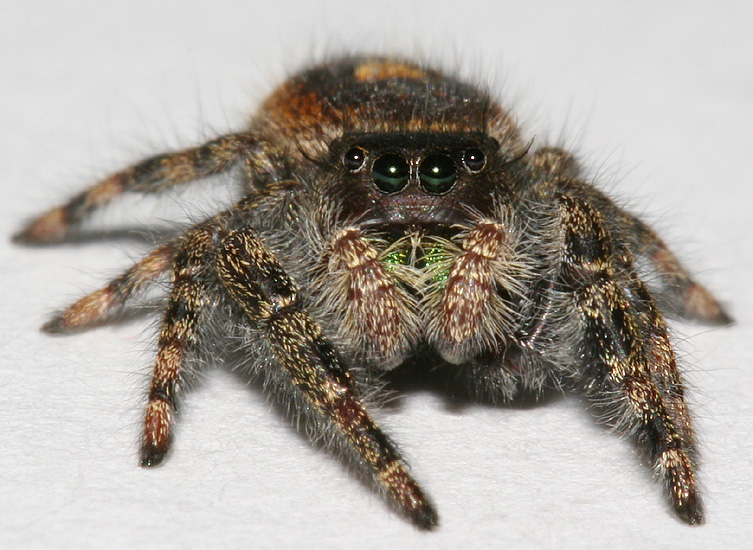
Salticidae Phidippus face
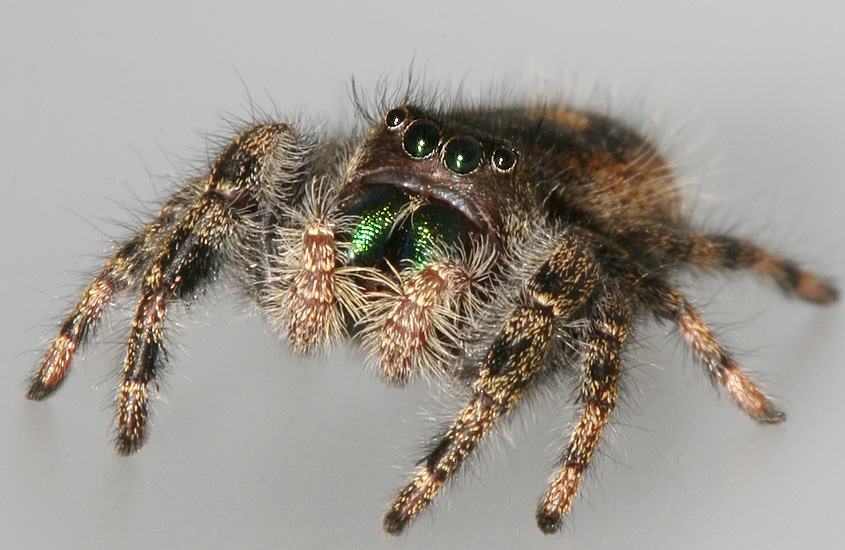
abdomen pattern
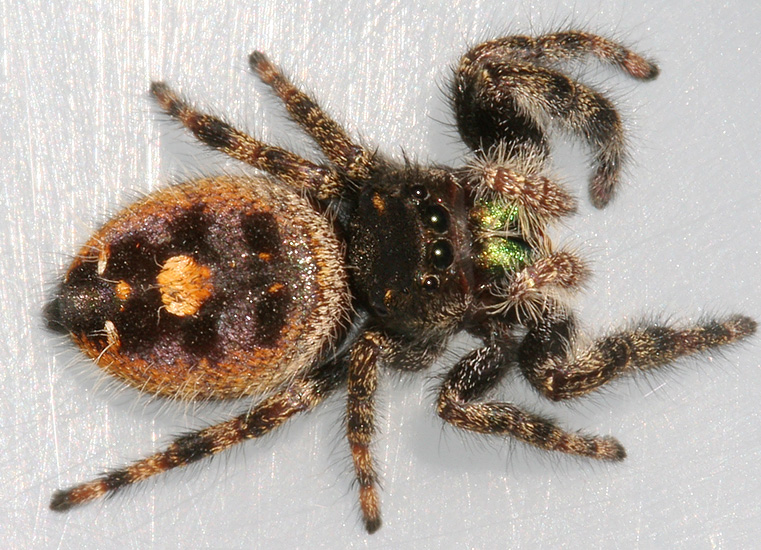
eyes on top of the head
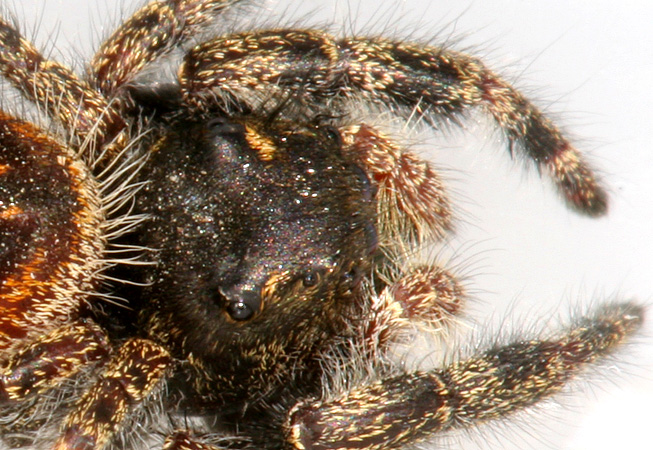
abdomen
close-up
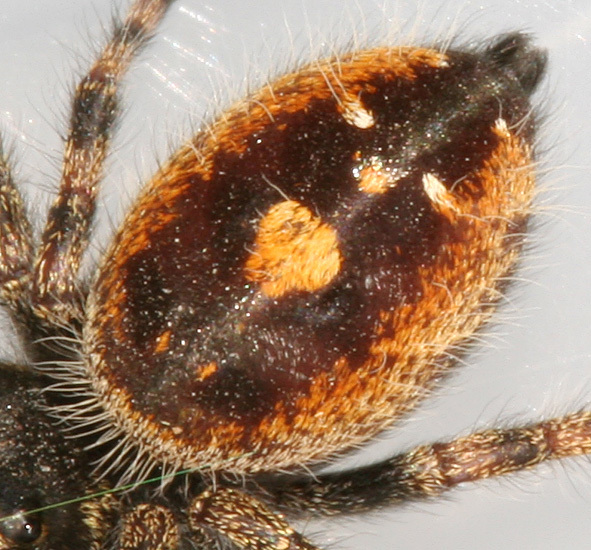
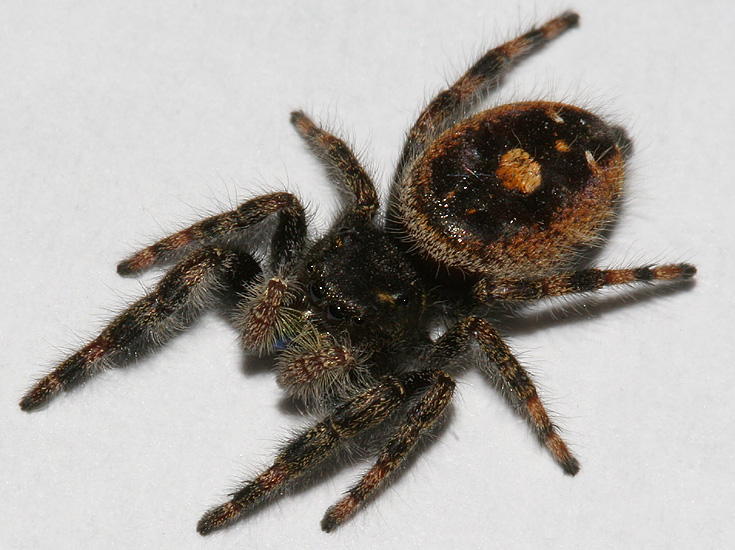
Photo Details
March 23,
2006 - Draper, Salt Lake County, Utah -
1. face , 2. face, 3. dorsal, 4. eyes on top of the head, 5.
close-up of abdomen-dorsal
1 thru 5 - Canon D20 100mm lens, F20, 1/250, ISO 200, Flash +1 2/3
6. dorsal - Canon D20 100mm lens, F18, 1/250, ISO 200, Flash +1 1/3
©Nicky Davis
Family tree
Salticidae Phidippus species unk.
Other
A common jumping
spider encountered in North America and are known for the spectacular
leaps the spiders make pouncing on their prey. All species are
small, usually less than .63 inches long. They do not construct webs,
but actively hunt prey during the day, sneaking up and they pouncing on
the victim. Many are brightly colored, sometimes with iridescent
chelicerae (mouthparts). They possess 8 eyes and are known to have the
sharpest
vision of all spiders, important for hunting ability. The arrangement
of the eyes, four big eyes on the face and four smaller eyes on top of
the head, distinguish Saltids from other spiders. The larger pair of
eyes (anterior median on the face) apparently serve for sharp vision,
and the others for peripheral vision. Since the lenses of these
eyes
are relatively fixed, the internal eye muscles serve to move the
retina. Because the retina is the darkest part of the eye and it moves
around, one can sometimes look into the eye of a jumping spider and see
it changing color. When it is darkest, you are looking into its retina
and the spider is looking straight at you.
Jumping spiders are
carnivores and predators. They eat insects and other spiders. These
spiders do not spin webs but make little silken shelters under leaves
or bark.(1)
Saltids are the most
common biting spider in the United States.) Persons gardening appear to
be at risk for disturbing the habitat of this spider which may react by
jumping on exposed skin and inflicting a bite. The bite is usually
asymptomatic to slightly painful
References:
1.Jumping Spiders (Family Salticidae) in Lorus and Margery Milne, The
Audubon Society Field Guide to North American Insects and Spiders.
Alfred A. Knopf, New York, 1980. page 910
2. Richman, David B. Status of Jumping Spider (Araneae
Salticidae) Taxonomy worldwide.
|
|











